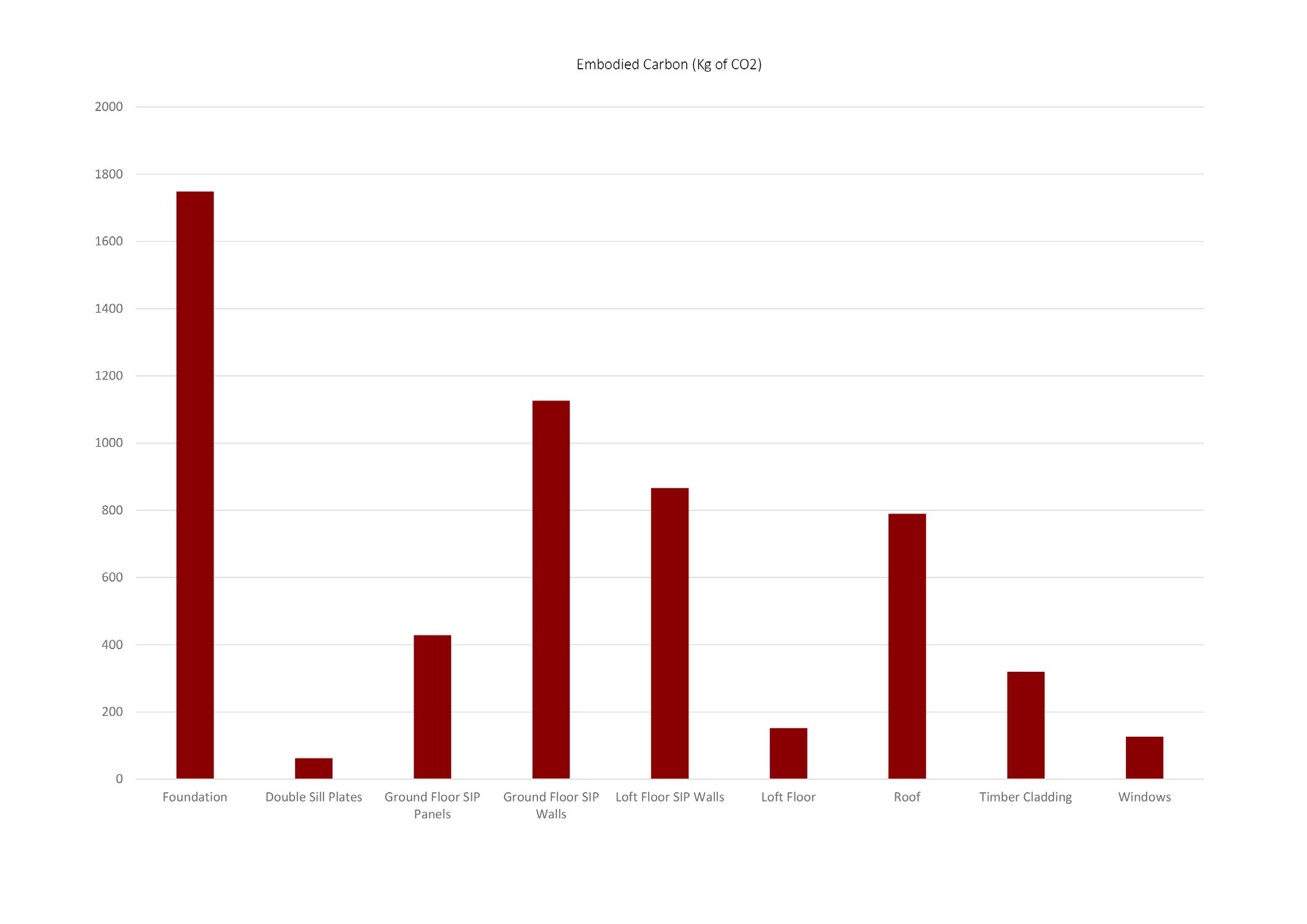
1 minute read
STRUCTURALLY INSULATED PANELS CARBON ANALYSIS FINDINGS OFFSETTING THE EMBODIED CARBON
For this project, the main way of reducing and offsetting the carbon emissions is the use of structurally insulated panels (SIPs). SIPs main benefits are their airtightness and insulation, with the main aspect of reducing carbon emissons through reducing the energy consumption for heating and cooling.
The SIPs provide various benefits in offsetting the embodied carbon through:
Advertisement
1. The OSB uses 35% less timber used compared to traditional building methods. Timber uses 20% of the energy needed for concrete to make a product with equal strength.
2. The SIPs have a U-value of 0.13 which is a Passivhaus standard.
3. Building is nearly entirely made of SIPs, reducing sourcing different materials.
4. SIPs improve the airtightness and reduce cold bridging therefore the amount of energy used to heat and cool a room can be cut by up to 50%.

5. SIPs reduce heat loss and improve energy efficiency.
6. Specialist design and cutting systems ensure that minimal waste, any excess materials can be recycled or re-purposed.
SIPs can drastically reduce the waste generated during construction by using advanced optimization software and automated fabrication technology to ensure the most efficient use of material. From the OSB production process to the use of the insulation, all materials used for the SIP are recycled or can be recycled. Offsite manufacturing results in less waste on-site, reduced build time and better quality. Comparing a SIP building to a traditional timber frame building or brick and masonry buildng, the SIP building provides various benefits over the two. One being a lower embodied carbon, another is the efficency of consruction labour and cost.
Another crucial aspect is that the tiny homes can be build reusing previous SIPs meaning the reused or recycled SIPs have a lower carbon footprint as the carbon used to make them has already been spent.









